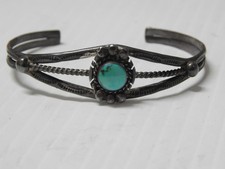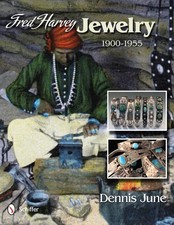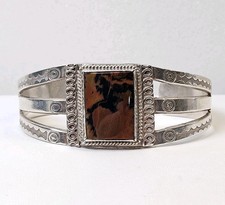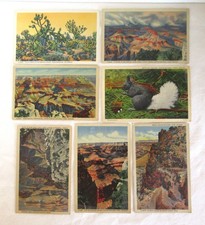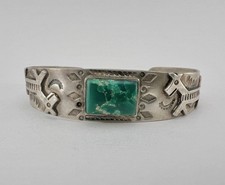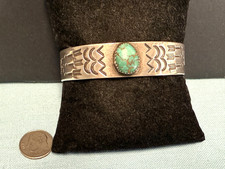Navajo Indian Fred Harvey Era Sterling Silver Whirling Logs Design Arrow Pin
Navajo Indian Fred Harvey Era Sterling Silver Whirling Logs Design Arrow Pin
The pin does show typical age related wearing but is in nice shape for its age. The pin is approx. 1 1/4″ long by 1/2″ wide at its widest portion. The first picture shows the pin darker than it really is which was due to a reflection.
Condition: Used
Price: USD 94.48
Seller: artpottery (100.0% positive feedback, 13567 reviews)
View this Fred Harvey item on eBay
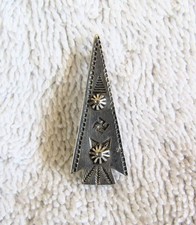
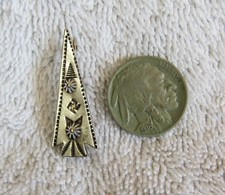
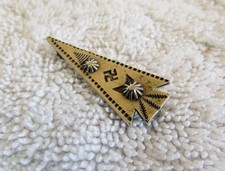
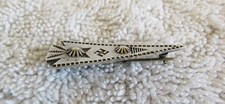

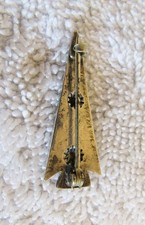
Item Description from Seller
The earliest known swastika was seen about 10,000 years ago. The intricate pattern of joined swastikas was found on a late paleolithic figurine of a bird, carved from mammoth ivory, found in Mezine, Ukraine. The word ‘swastika’ derives from an Asian Indian Sanskrit word, in which the meaning of the swastika stands for universal welfare. “Swasti” means well-being of one and all and “ka” means symbol. The swastika is one of the most ancient of all symbols and used as a symbol for peace, life and good luck. In the Western world, it was a symbol of auspiciousness and good luck until the 1930s, when it was hijacked by the German Aryan party. I find the taking of an Indian symbol despicable, and chose not to mention their name. The swastika motif is found in some traditional Native American art and iconography. Historically, the design has been found in excavations of Mississippian-era sites in the Ohio and Mississippi River valleys. It is also widely used by a number of southwestern tribes, most notably the Navajo, and plains nations such as the Dakota.
The Aryan icon is an inverted version of the traditional American Indian symbol, which usually features the arms pointing counterclockwise. Before the 1930s, the symbol for the 45th Infantry Division of the United States Army was a red diamond with a yellow swastika, a tribute to the large Native American population in the southwestern United States. It was later replaced with a thunderbird symbol.
The swastika is a Navajo symbol for good luck, also translated to “whirling log.” The symbol was used on state road signs in Arizona. In the late 19th and early 20th centuries, the swastika symbol became established in Western cultures, especially with the Navajo culture, as a good luck or good fortune symbol, and was used in Native healing ceremonies.
The Navajos incorporated the swastika into their rugs, jewelry, and art. Arizona’s indigenous Pima and Maricopa people wove them into their baskets and painted them onto their pots. The swastika’s meaning does seem to be similar across cultures, generally denoting abundance and prosperity and referring to the four cardinal directions.
I stand behind all my Native American Indian crafted items to be as represented, and provide a full unconditional refund, including return shipping if the item is not authentic and as described. My Native Indian arts, crafts, and jewelry are purchased directly from Natives, usually in Arizona, South Dakota, New Mexico, as well as buying from specialty auctions and sales. In addition, I sell items for Native Americans and from personal collections. As a result, there is no time limitation on returns, but items returned need to be in their original condition.
Please feel free to contact me with any questions about my items. I stand behind my merchandise and provide a full refund if items are not as described. Purchase with confidence as I do want customers to be satisfied with their purchase. Check-out my other items for sale and auction. The buyer pays a flat shipping rate. I do combine items to save on shipping costs. Please let me know ahead of time.
Check out my Ebay shipping terms. PLEASE NOTE: Shipping items could take up to 5 business days, or 7 regular days once payment is made due to being an old man with arthritis, back issues, and a host of other medical problems. I will try my best to get the item out sooner. Thanks for your business.
Insurance is included in the price for shipping and handling.
